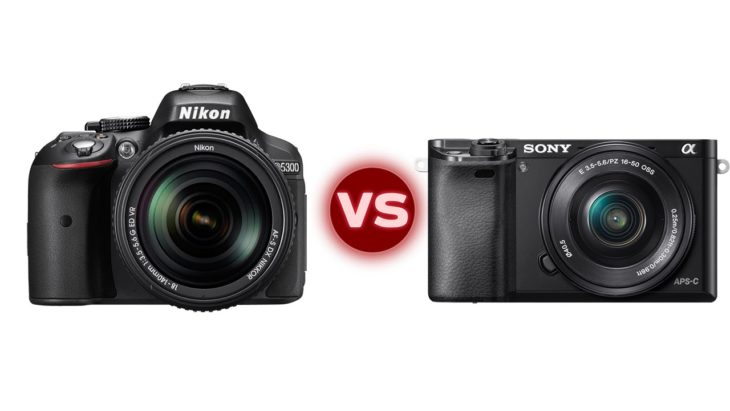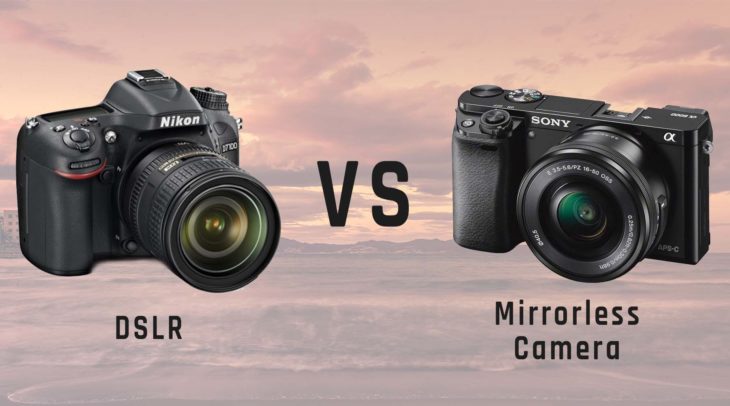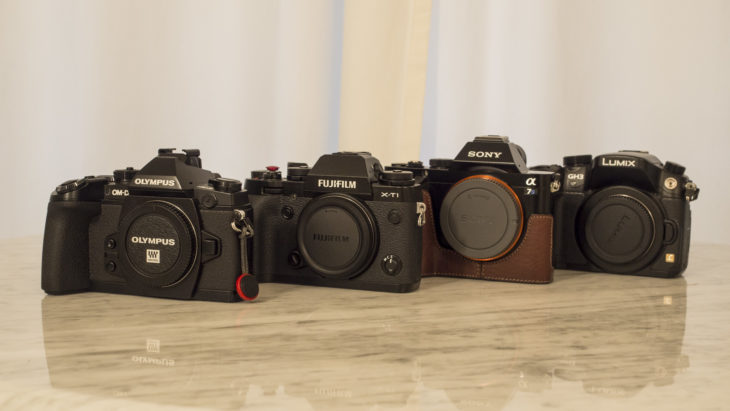As you may already know, mirrorless cameras come with a lot of advantages, especially for travelers and the so-called backpackers. Any lightweight traveler that’s looking for a camera that’s easy enough to use, capable of reasonable performance, and which can be easily put in a backpack will most certainly choose a mirrorless one.
However, there are also some disadvantages that have to be taken into consideration when you think of buying one. Today we’ll discuss some of those disadvantages and ultimately decide whether they matter to most of us or not – better put, are the disadvantages of a mirrorless camera enough to make you not buy one anymore?
Contents
Sensor Exposure
When you wish to change the lens on a DSLR camera, its sensor will be protected by the mirror in front of it. Even though dust can still find its ways and get into the housing of the camera, it still has a hard time reaching the sensor.
On the other hand, when you change the lens of a mirrorless camera, you leave the sensor exposed to the rest of the world, so to say. Therefore, this procedure can turn from something quite simple into a process that requires you to turn your back to the wind, pack an air blower ready to get rid of anything that lands on the sensor and keep your eyes peeled for any debris or dust.

Source: YouTube
For example, if we are to compare the Sony a6000 vs Nikon d3500, we notice that both of them are quite compact and easy to pack up, in most cases. Thus, if you are worried about the sensor and think you may not be able to protect it enough, then you might want to pick the counterpart of the mirrorless camera.
To get a better image of what various cameras provide, you might want to go on What-Camera.com and see the different comparisons between models. It is always better to do proper research beforehand, and to find out as much as you can before laying down the money. Not only can this help you save money – but sometimes, seeing the sensor exposure and other features in comparison will help you determine whether or not a certain model is right for you.
The Limitations of the Electronic Viewfinder
DSLR cameras are equipped with a viewfinder based on a prism and a mirror. When you look through it, you see exactly what’s reaching in the front of the lens at that time. Simply put, you are looking through the lens.
However, mirrorless cameras come with an electronic viewfinder that will show you what’s happening in front of you only after the light touches the sensor and then goes through the camera’s processor.
Due to this, you will experience a slight loss in clarity, mainly caused by the limitations of pixel density. Also, you will also be faced with a delay of .005 seconds, since you don’t see what’s happening in real time, so to speak. But still, there’s no way that you can notice those .005 seconds.
Probably the most important aspect is that the electronic viewfinders are limited in low light scenarios. Thus, you will lose clarity, notice grain, and even have lower refresh rates because of that.
Battery Life

Source: Arranel Studios
Naturally, given the fact that mirrorless cameras use processing power to make the electronic viewfinder work, you may find yourself running out of battery faster than a DSLR.
However, as we see this aspect continuously improving – getting from a battery life of 270 shots to one of 480 and even 650 shots -, we may soon scrap up the battery life as being a disadvantage of mirrorless cameras.
Ergonomics
While mirrorless cameras are usually chosen for their small size, this feature can easily become a disadvantage in the wrong hands – better put, in the large hands. As they come with a small grip, your hands may cramp up if you use the camera for an extended period of time.
However, there are extended hand grips available on the market, so you can’t really complain that a camera designed to be small is too small for your hands.
Lens Selection

Source: Photography Life
It is well known that the lens selection for mirrorless cameras is not that big when compared to DSLR cameras. Still, it won’t be too long until the fans of mirrorless cameras will have all the lens they need at their disposal.
There are third-party manufacturers that produce lenses for both mirrorless and DSLR cameras – so we don’t need to worry about the lack of lenses.
Concluding Remarks
Even though some disadvantages may put you off from buying a mirrorless camera – and instead opt for the bulkier DSLR -, you have to keep in mind that the market will always evolve and develop this type of cameras.
After all, they emerged with a roar, so to say, and they can’t simply get out of the picture that easily. So, what do you think? Are these disadvantages enough to make you reconsider? Because, for us, they don’t seem like making too much of a difference, especially for the traveling photographer.
